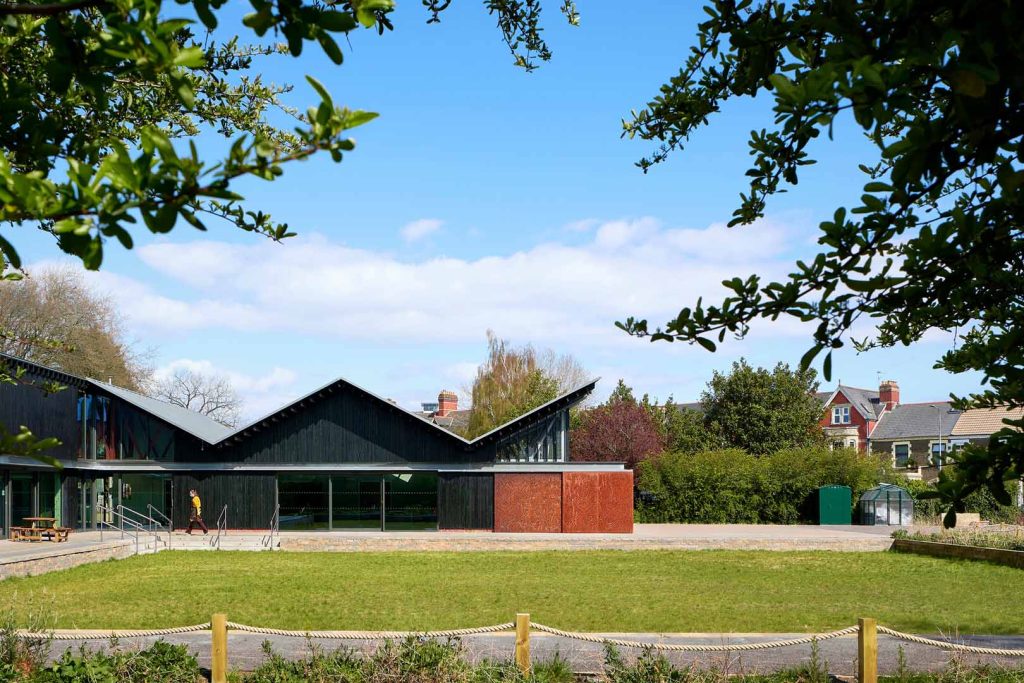Grange Pavilion began as a partnership project between Cardiff University’s Community Gateway and residents’ groups Grangetown Community Action and Grange Pavilion Project to redevelop a vacant bowls pavilion and green in a popular neighborhood park as a community-owned, multifunctional pavilion and garden. The residents’ aim of creating “a sustainable, vibrant, and friendly community facility in central Grangetown, where people of all backgrounds can connect” complemented a goal that the pavilion should act as a catalyst for further community-led actions for a better-quality built environment at a neighborhood scale.
Cause
Vacant and deteriorating, the existing pavilion building leaked, was uninsulated and unheated, and was inaccessible to people with disabilities. Identifying a need for a welcoming, high-quality civic space, a group of residents partnered with Cardiff University in 2012 to test ideas for community ownership. The design brief stipulated that the facility should be easily and economically maintained by a community committee, leading to an environmental strategy of underfloor heating, passive lighting and ventilation, photovoltaic roof panels, and surface rainwater gardens.
Method
Undergraduate students were paired with Grangetown residents to conduct an appreciative inquiry consultation into community interests and priorities. The outcomes supported formation of the Grange Pavilion Charitable Incorporated Organization (CIO) by connecting community members and defined priorities for the design brief.
During design, students interviewed residents and groups planning specific activities in the Pavilion. The students created a detailed specification of the social, spatial, and practical needs and desires of each group and activity, supporting the final detailed design decision.
Impact
Four key outcomes were defined: (1) increased community resilience (measured by numbers of residents in the CIO, skills development of CIO members, growth of income generation and employment, and transfer of ownership to the CIO); (2) increased social cohesion (measured through number and types of events, demographics of participants, and participants’ experiences); (3) improvements in the built environment (measured through BREEAM standards, baseline and annual surveys of biodiversity increase, and interviews with residents); and (4) increase in activities offered for well-being, employment, and youth provision (measured through numbers of participants and individual narratives).

